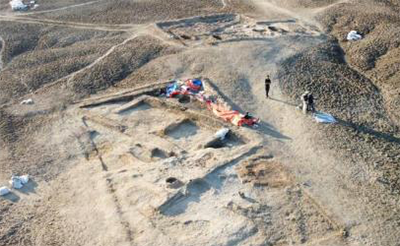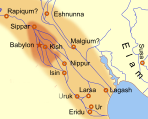|
4,700-year-old Tavern Found at Ancient Sumerian City Lagash
January 26, 2023
Archaeologists have unearthed what they say is remains of a 4,700-year-old tavern from ancient Sumeria. Penn University's Holly Pittman, director of the project, has given details of the find, near the remains of Lagash, one of antiquity's super-cities. The focus of the digs has been the daily lives of ordinary individuals, and so the find of a place at which such people met and ate has been exciting to the team, led in the field by Sara Pizzimenti from the University of Pisa. Details of the find include remnants of the building's framework–walls and shelves–along with what is left of a zeer, an ancient underground refrigerator-equivalent used to store food and beverages. The circular system featured an outside layer of clay that was lined with wet sand, enclosing a clay pot that contained whatever was meant to be kept cold. The discovery of an oven, benches, and a large number of pots and potsherds within the general area confirmed the purpose of the building, which the team dated to 2700 B.C. Lagash, in what is now Iraq, was, in its heyday, an economic powerhouse, a star of the Sumerian civilization, one of the first in the Fertile Crescent. The city was close to the sea, in that the Persian Gulf was much more inland in those days than it is now, and about midway between the Euphrates River and the Tigris River, making the city an appealing stop on trade routes. Lagash enjoyed independence along with its prosperity, boasting its own kings for many generations; however, as with other prominent Sumerian cities, Lagash fell to the dominance of the world's first emperor, Sargon of Akkad. As was often the case, the death of a powerful ruler left a vacuum and Lagash underwent a revival. It eventually faded again, however. Using a mixture of traditional methods and high-tech scanning methods such as drone photography and magnetic imaging, the team has also found other evidence of a large population center, in the form of kilns and accompanying mud brick pits, houses, streets, and alleyways. One of the more complete houses found contained a kitchen, bowls of food, and a toilet. Other expected finds included many beads, tokens, and potsherds. The dig is in its fourth year. The team intends to continue. |
Social Studies for Kids |
Social Studies for Kids
copyright 2002–2024
David White






